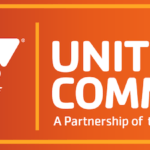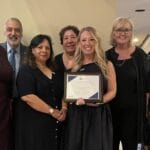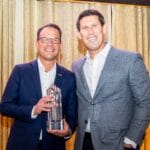Innovation in healthcare is exhilarating, but it’s also a high-stakes balancing act. Every breakthrough promises to change lives, yet before reaching patients, it must navigate a maze of regulations, approvals, and market adoption hurdles.
At Erchonia, we’ve seen this process firsthand. Our low-level laser technology – used for fat reduction without drugs or surgery – represents a new frontier in non-invasive medical solutions. But creating innovative devices is only half the battle. The other half is navigating the regulatory landscape, educating clinicians, and ensuring patients understand the technology’s real-world value.
Regulation: More Than Just Red Tape
When people hear “FDA approval,” many assume bureaucracy and endless paperwork. In truth, the process is designed to safeguard patients, but it also dictates how innovation unfolds. For Erchonia, bringing low-level lasers to market meant carefully designing clinical trials and providing evidence that these devices are safe and effective. Even small errors in documentation or trial design could have delayed approval by months, or worse.
Yet regulation isn’t just a hurdle – it’s a guide. Understanding the FDA’s pathways helped us anticipate challenges, refine our devices, and build a solution that meets both safety standards and patient needs. Properly navigated, regulation becomes a roadmap, not a roadblock.
Market Adoption: The Real Test of Innovation
Clearing the FDA is just the start. The real challenge lies in adoption. Clinicians are cautious—and rightly so. They need confidence that a new therapy works reliably outside the lab. Patients, too, need clarity: they want non-invasive options they can trust to safely reduce fat without drugs or surgery.
Here, communication is key. Explaining complex technology in simple, relatable terms isn’t marketing…it’s essential. For example, our devices target fat cells using low-level laser light, causing them to naturally release fat. There’s no downtime, no injections, and no surgical risk. But it takes education and clear evidence for both clinicians and patients to embrace the technology confidently.
Innovation in Context
The most important lesson I’ve learned is that technology alone isn’t enough. True healthcare innovation happens at the intersection of science, regulation, and human behavior. A device can work perfectly in a lab, but without regulatory approval, provider buy-in, and patient understanding, it will never make a real-world impact.
Our fat-reduction lasers had to overcome all three hurdles. Clinical trials demonstrated measurable fat loss. The FDA cleared the technology. And we worked to train clinicians and communicate results in ways patients could grasp easily. Every step required persistence, collaboration, and careful planning.
Patience, Transparency, Collaboration
If there’s one principle guiding successful innovation, it’s patience. Progress in medical technology rarely happens overnight. Approvals take time. Education takes time. Trust takes time. Rushing the process risks mistakes, patient safety, and credibility.
Transparency is equally critical. Sharing data openly with regulators, clinicians, and patients fosters trust. When people understand not just what the technology does, but how it works, they are more likely to adopt it safely.
Collaboration is the third pillar. Innovators cannot work in isolation. Regulators, healthcare providers, and patients all shape the success of a new device. Listening, learning, and adapting to their feedback ensures the technology meets practical needs and delivers meaningful results.
The Non-Invasive Future
The rise of non-invasive, drug-free, and surgery-free solutions is reshaping healthcare. Patients want results without the risks or downtime associated with traditional procedures. Our fat-reduction lasers are part of that shift. But bringing such innovations to life requires careful navigation of regulation, market adoption, and education, no matter how promising the technology.
The journey is complex, but it’s rewarding. When a patient sees visible fat reduction without surgery, and a clinician sees a device that delivers consistent, safe results, all the regulatory hurdles, clinical trials, and strategic planning suddenly make sense. Innovation isn’t just about creating something new; it’s about creating something that works, safely, in the real world.
At Erchonia, we’ve learned that success comes from patience, transparency, and collaboration. By combining cutting-edge technology with careful attention to regulatory and human factors, we can deliver devices that not only innovate but also improve lives, without drugs, without surgery, and without compromise.

Steven Shanks
Steven Shanks is the President of Erchonia, a company specializing in low-level laser therapy (3LT®) that he started with his partner after their father's involvement in the laser business. He also serves as an engineer and owner, and is involved in the company's scientific and clinical research to develop agency-approved laser products and treatments.








